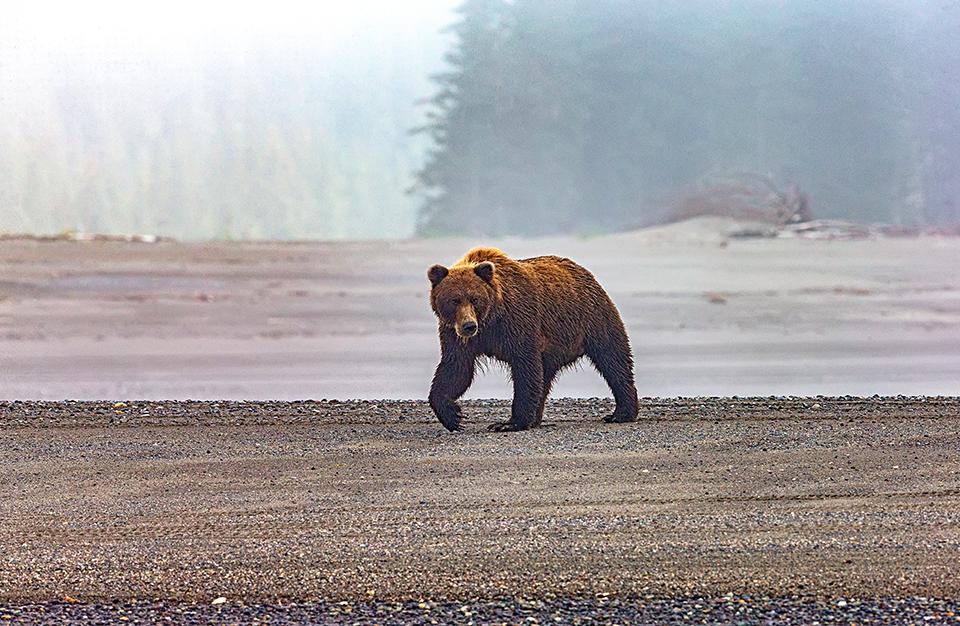
A misty morning stroll along the beach, Lake Clark National Park and Preserve / Rebecca Latson
Twelve national parks have been established over the years during the month of November, so this quiz will have 12 questions instead of the usual 10. How much do you know (or think you know)about Gates of the Arctic National Park and Preserve, Glacier Bay National Park and Preserve, Katmai National Park and Preserve, Kenai Fjords National Park, Kobuk Valley National Park, Lake Clark National Park and Preserve, Wrangell-St. Elias National Park and Preserve, Everglades National Park, Petrified Forest National Park, Capitol Reef National Park, White Sands National Park, and Shenandoah National Park? Test your knowledge before checking the answers at the bottom.
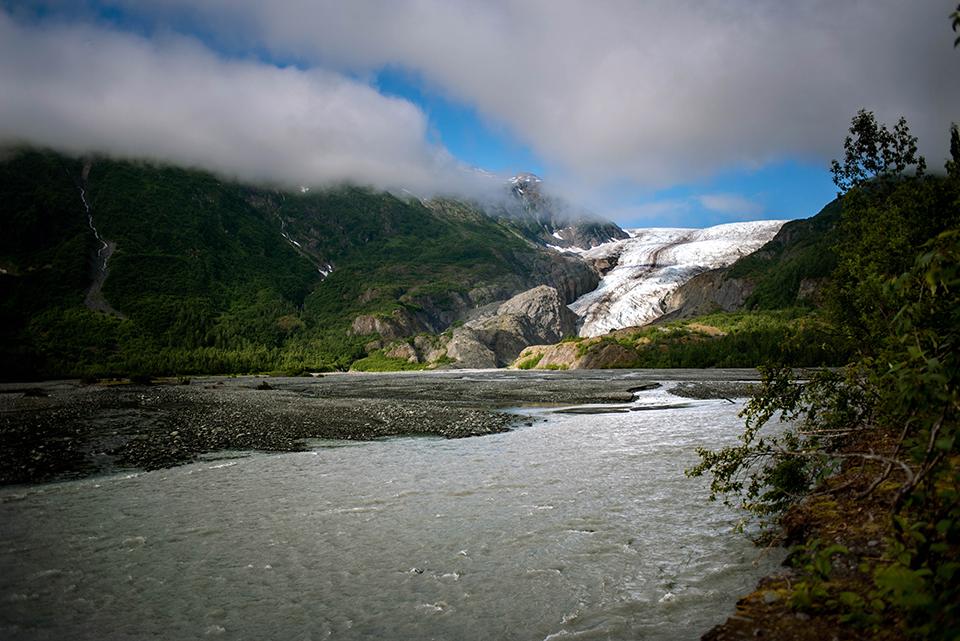
Exit Glacier seen from across the outwash plains, Kenai Fjords National Park / NPS - C. Grobelny
1. True or False: Kenai Fjords National Park is the least visited national park in the U.S.
a) True
b) False

Alatna River seen from above, Gates of the Arctic National Park and Preserve / NPS - Sean Tevebaugh
2. There are ____ Wild and Scenic Rivers within Gates of the Arctic National Park and Preserve.
a) two
b) Four
c) Six
d) Eight

Chowing down on a blubber buffet, Glacier Bay National Park and Preserve / National Park Service
3. “In 2010, brown bears in Glacier Bay received a four-month buffet in the form of a 41 foot dead humpback whale that washed up on a beach in the West Arm and persisted throughout the summer. While the cause of the whale's death is unknown, the carcass provided a rare opportunity for bears in this area to gorge on fat and protein for several months, and also a rare treat for visitors and locals to observe and photograph bears, birds, and wolves at the carcass.” Whale blubber contains up to ______ calories per pound.
a) 3,000
b) 4,000
c) 5,000
d) 6,000

Family, Katmai National Park and Preserve / Rebecca Latson
4. True or False: Brown bears are the only bears that have visited Katmai National Park and Preserve.
a) True
b) False
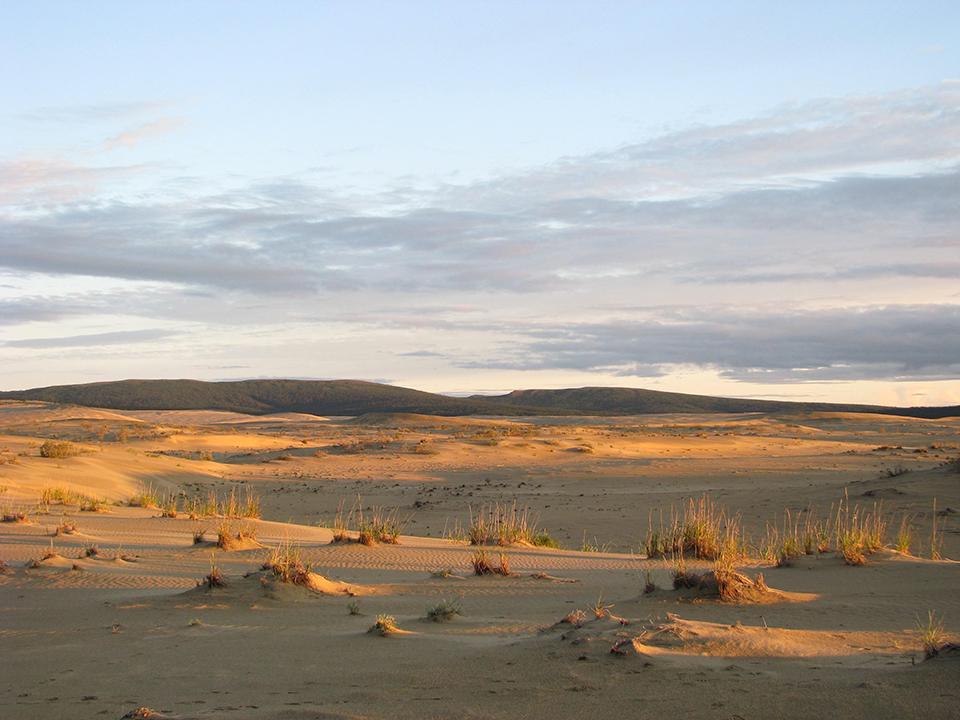
Evening light on the dunes in Kobuk Valley National Park / National Park Service
5. While one thinks about cold temperatures, snow, and ice in the Arctic, there are also sand dunes, too! Kobuk Valley National Park is home to three dune fields: the Great Kobuk Sand Dunes, the Little Kobuk Sand Dunes, and _____.
a) Salmon River Sand Dunes
b) Akiak Creek Sand Dunes
c) Akillik River Sand Dunes
d) Hunt River Sand Dunes
6. Lake Clark National Park and Preserve boasts ___ miles of coast along Cook Inlet between Chinitna and Tuxedni bays.
a) 123
b) 136
c) 141
d) 154
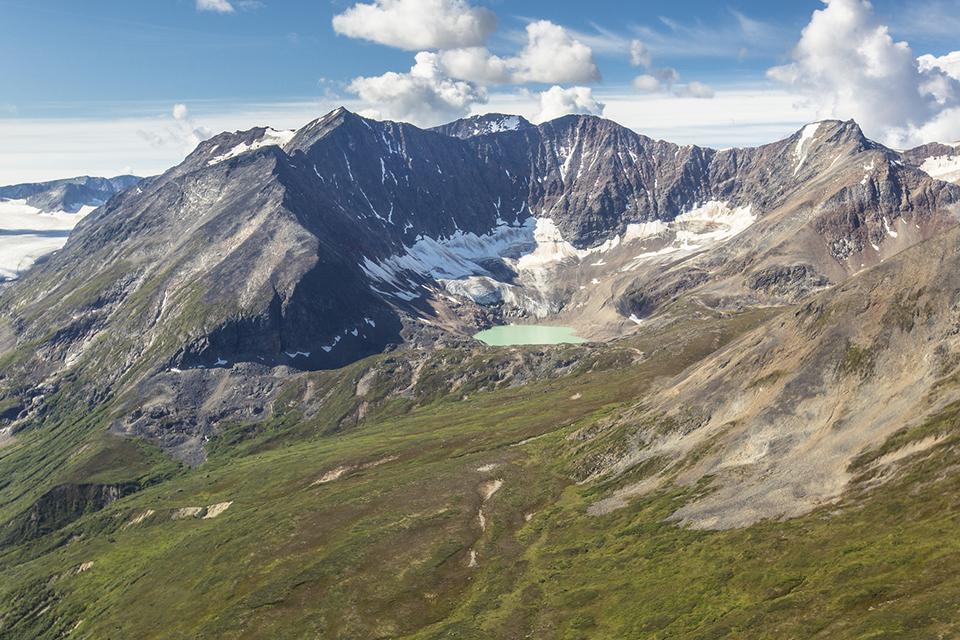
Glacial landforms: Granite Creek tarn sitting in a cirque, Wrangell-St. Elias National Park and Preserve / NPS - Jacob W. Frank
7. True or False: Wrangell-St. Elias National Park and Preserve is as large as Yellowstone National Park.
a) True
b) False
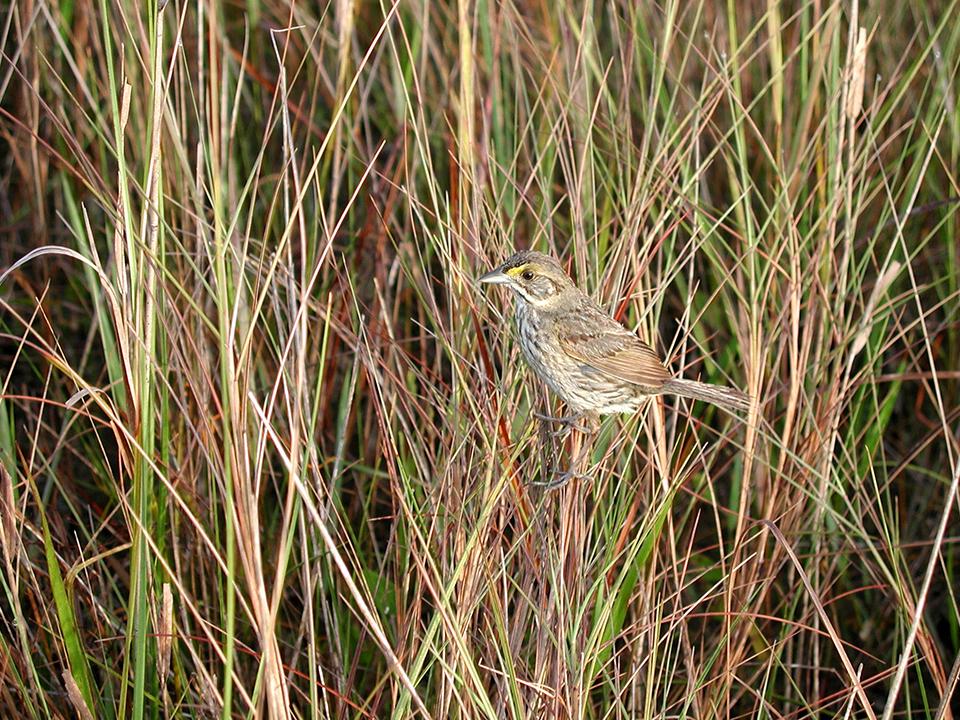
A sparrow perched in sawgrass, Everglades National Park / NPS - Lori Oberhofer
8. True or False: Everglades National Park has the largest continuous stand of sawgrass prairie in North America.
a) True
b) False

Rabbitbrush - the color of summer, Petrified Forest National Park / Rebecca Latson
9. Rabbitbrush is an attractive shrub with yellow-gold blooms found at Petrified Forest National Park. Two other commonly-seen shrubs in the park are saltbush and sagebrush. Which one of these is used by the Hopi as a source of culinary ash in their cooking?
a) Rabbitbrush
b) Saltbush
c) Sagebrush
d) None of the above
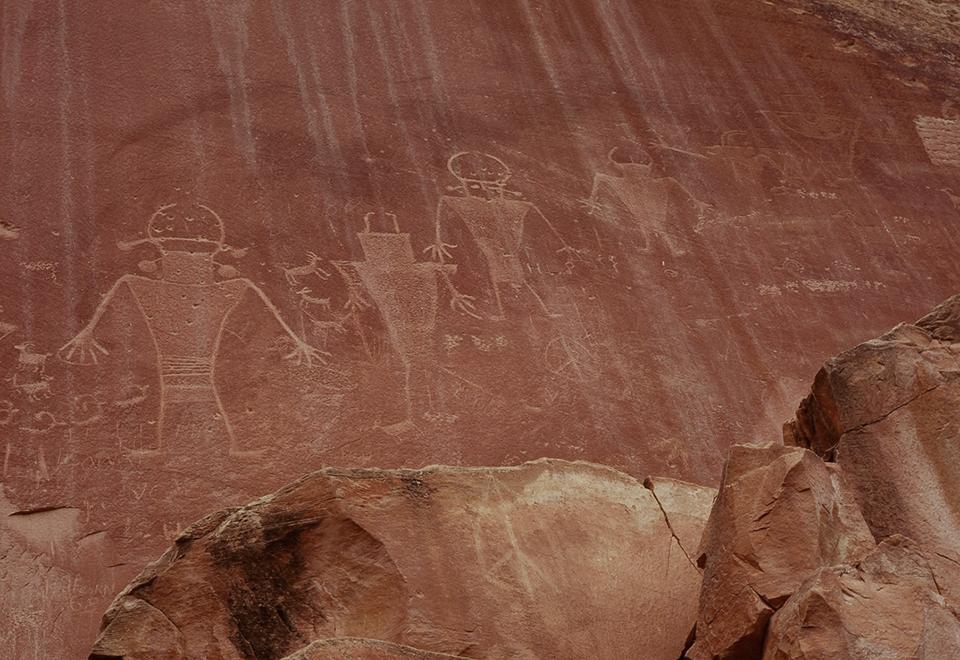
Petroglyphs at Capitol Reef National Park / National Park Service
10. A visit to Capitol Reef National Park is not complete without a look at the petroglyphs along Utah State Route 24. Petroglyphs are images carved or pecked into the stone. Archeologists named the people who lived here and created those petroglyphs after a geographical area where the people were first defined as a distinct culture:
a) Chimney Rock
b) Deep Creek
c) Fremont River Canyon
d) Miners Mountain
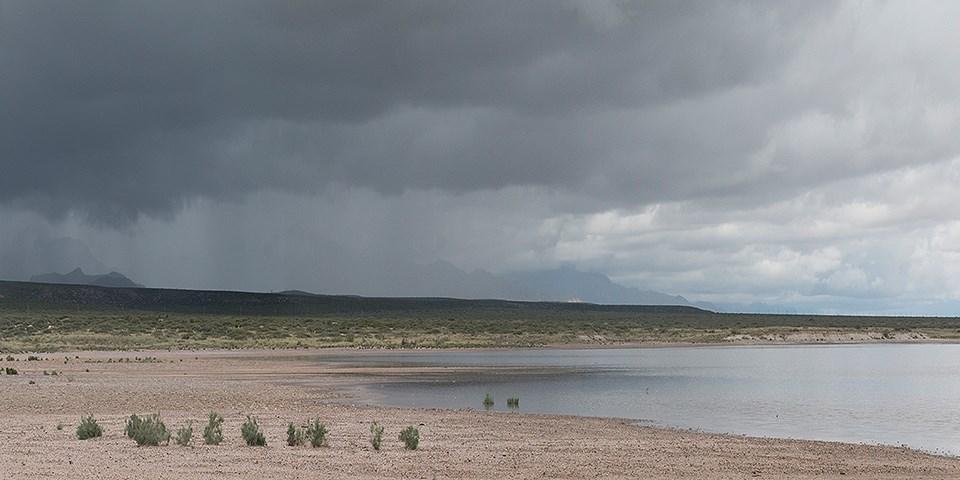
Water in the desert, White Sand Dunes National Park / National Park Service
11. “Within the Chihuahuan Desert, White Sands gypsum dunefield functions as an island—an oasis of life formed with water. Groundwater can be found only ___ inches below the surface …”
a) 7 - 10
b) 12 - 36
c) 40 - 45
d) 60
12. True or False: Skyland Drive is the name of the 105-mile (168 kilometer) stretch of road along the crest of the Blue Ridge mountains in Shenandoah National Park?
a) True
b) False
Trivia

A carver working on the Wooshkeetaan House post, Glacier Bay National Park and Preserve / National Park Service
“Glacier Bay National Park is the ancestral homeland of the Huna Tlingit clans who sustained themselves for centuries on the abundant resources of the land and sea. Although villages inside the Bay were overrun by the Little Ice Age glacial advance of the 1700's, the Huna Tlingit re-established numerous fish camps and several villages in Glacier Bay soon after glacial retreat. The Huna Tribal House memorializes the clan houses that once lined the shores of present day Bartlett Cove, now the site of National Park Service headquarters in Glacier Bay. The project also provides an opportunity to revitalize Tlingit artistic traditions. Through a cooperative agreement between the tribal government and NPS, master craftsmen have trained a cadre of local apprentices and students in traditional Tlingit art and design, carving, adzing, and spruce root weaving. Over seven years, carvers have crafted and installed the elaborately carved and painted cedar panels that adorn the house front, four richly detailed interior cedar house posts and an interior house screen which depicts the stories of the four primary Huna Tlingit clans. Raven and Eagle totems were completed and installed in 2017 as well as the Healing Pole in August 2018. These precious cultural elements impart spiritual value to the Tribal House and its surroundings, but as importantly, their design and completion has expanded the circle of tribal members who share in cultural knowledge.”
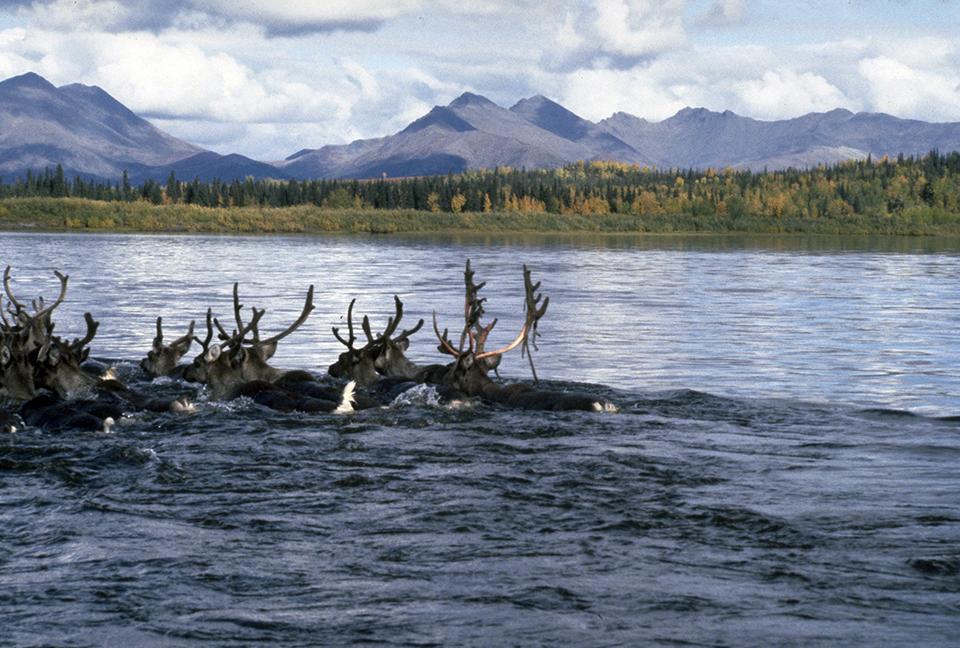
Caribou swimming the Kobuk River, Kobuk Valley National Park / National Park Service
“Kobuk Valley is home to one of the last great migrations left on the planet. Every spring and fall, the Western Arctic Caribou Herd –a quarter of a million animals –passes through the valley on the 600 mile trek between their summer and winter grounds. In our rapidly urbanizing world, many of the great migrations have disappeared, and Kobuk Valley National Park protects this millennia-old journey that is vital to both the caribou and the people who live in their path.”
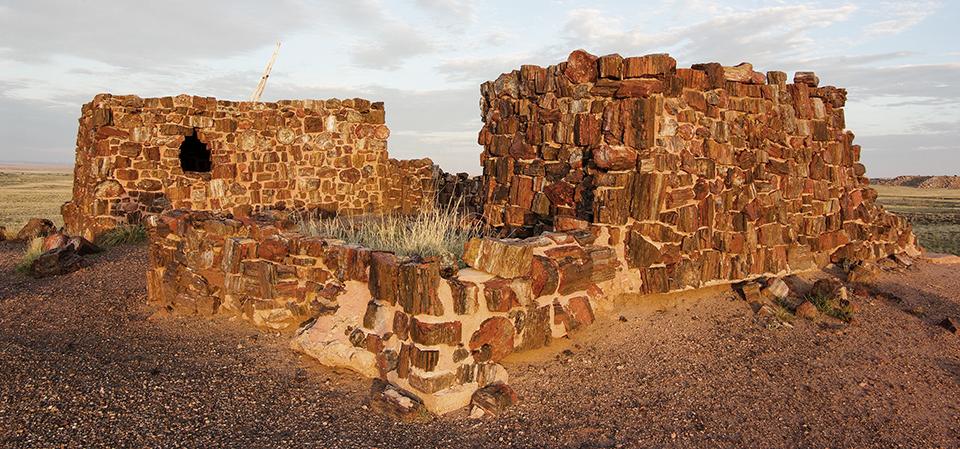
Agate House, Petrified Forest National Park / National Park Service
“Ancestral Puebloan people used petrified wood for a variety of purposes including tools such as projectile points, knives, and scrapers. Agate House demonstrates another innovative use of petrified wood: as a building material. The eight-room pueblo was built and occupied sometime between 1050 and 1300 in a location near agricultural fields and petrified wood deposits. The size of the structure and time necessary to build and maintain it indicates that this was likely a year-round residence for a single family, rather than the temporary residences or field houses common at that time. It may have even served as a meeting place for the surrounding community. The scarcity of artifacts found at Agate House suggest a relatively brief occupation.”
The Agate House you see today is a 1930s reconstruction “using original materials, although not a completely accurate replication of the original structure. It was listed on the National Register of Historic Places in 1975 … During Winter 1933-34, workers reconstructed a petrified wood structure under the watchful eye of archeologist Cornelius B. Cosgrove, Jr. The crew was a detail from the Civil Works Administration, which would become the Works Progress Administration (WPA). Cosgrove was an archeologist that specialized in the Southwestern United States and worked for the Laboratory of Anthropology at the Museum of New Mexico.”
Quiz Answers
1b False
Actually, Gates of the Arctic National Park and Preserve is the least-visited national park in the U.S., owing to its remoteness, lack of “supportive infrastructure,” and the fact that there are no roads or trails in this park. Kenai Fjords National Park can be explored by boat, air taxi services, and via the only road in this national park, at the Exit Glacier area.
2c
“Gates of the Arctic National Park has six designated Wild Rivers: the John River, Noatak River, Kobuk River, Alatna River, Tinyaguk River, and the North Fork of the Koyukuk River.” To learn more about these six rivers, click here.
3b
“Whale blubber contains up to 4000 calories per pound compared to 672 per pound of salmon and only 256 per pound of blueberries.”
4b False
Ok, brown bears are the only bears to regularly inhabit Katmai National Park and Preserve, but in 2005, there was a verified sighting of a black bear in Katmai. This is the only verified sighting of a black bear in Katmai’s history. To read more FAQs and answers about brown bears and, in particular, brown bears in Katmai, click here.
5d
Kobuk Valley National Park is home to three dune fields: the Great Kobuk Sand Dunes, the Little Kobuk Sand Dunes, and the Hunt River Sand Dunes. To learn more about these sand dunes and life on the dunes, click here.
6a
“Lake Clark National Park and Preserve boasts 123 miles of coast along Cook Inlet between Chinitna and Tuxedni bays.” To learn more about the coastal ecosystem of this national park, click here.
7b False
Wrangell-St. Elias National Park and Preserve, covering 13.2 million acres, is the same size as Yellowstone and Yosemite national parks and Switzerland, combined!
8a True
Everglades National Park does, indeed, have the largest continuous stand of sawgrass prairie in North America. So, just what is sawgrass? “Sawgrass is a tall plant that if examined closely will reveal tiny ridges, or teeth, along the length of its sides.” Those ridges of tiny teeth could, actually, give you a type of paper cut if you aren’t careful! To learn more about the Everglades sawgrass prairie, click here.
9b
“The most common shrubs in the park are saltbush and sagebrush. They both have grayish green leaves and can grow relatively large. Saltbush is still used by the Hopi as the source of a culinary ash they use in cooking. Sagebrush can be used as seasoning. Both are used for dye. One of the largest shrubs in the park is the cliffrose. During late spring into summer, the resinous evergreen leaves can disappear under a heavy bloom of creamy, fragrant flowers. Rabbitbrush is another attractive shrub with showy golden blossoms, a member of the same family as sunflowers and asters.” To learn more about the trees and shrubs found in Petrified Forest National Park, click here.
10c
“The Fremont Culture lived in what is now Utah for about one thousand years, from 300-1300 Common Era (CE). Petroglyphs (images carved or pecked into stone) are one of the most visible aspects of their culture that remains. Archeologists named these people the Fremont Culture, for the Fremont River canyon where they were first defined as a distinct culture.”
11b
“Within the Chihuahuan Desert, White Sands gypsum dunefield functions as an island—an oasis of life formed with water. Groundwater can be found only 12-36 inches below the surface keeping the dunes at 99% humidity year round. The presence of the high ground water is essential for keeping the world’s largest gypsum dunefield from blowing away.” To learn more about the hydrology of White Sands National Park, click here.
12b False
Skyline Drive is the name given to a 105-mile (168-kilometer) stretch of road along the crest of the Blue Ridge mountains. Skyland is the name of a resort created in the late 1800s “decades before Shenandoah National Park was established.” To learn more about Skyline Drive, click here. To learn more about Skyland, click here.
References
Note: Different websites may have different national park establishment dates, so, I used this NPS publication as the standard.



Add comment